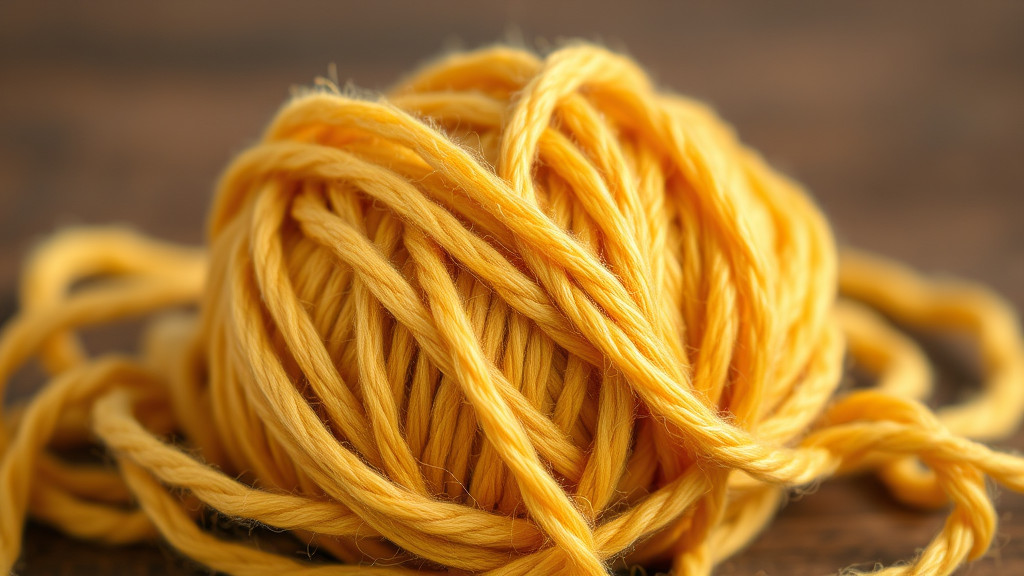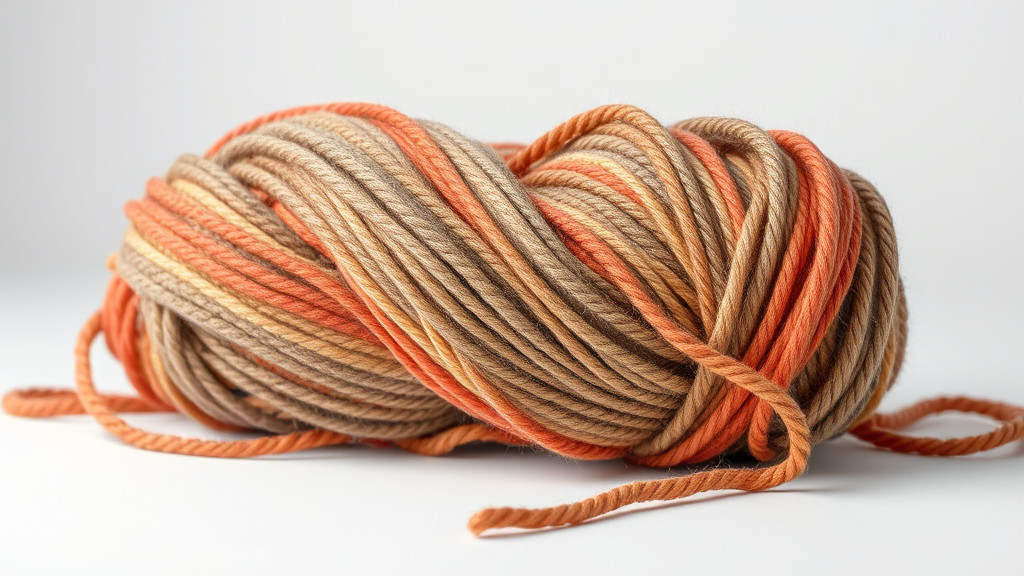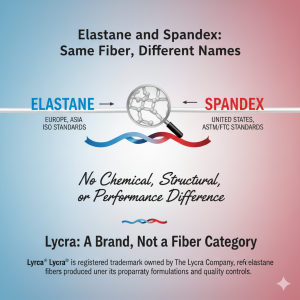The innovation of rubber covered yarn has transformed various industries, providing unique materials that enhance comfort, durability, and functionality. As an integral part of numerous applications, this versatile product has proven its worth, making it essential for manufacturers and consumers alike.
Understanding Rubber Covered Yarn

The world of textiles is rich with diverse materials, but few can match the versatility and effectiveness of rubber covered yarn. This specialized type of yarn combines traditional textile fibers with a protective coating of rubber, creating a hybrid material that boasts enhanced properties suited for a wide range of uses.
What is Rubber Covered Yarn?
At its core, rubber covered yarn consists of a flexible base fiber—often cotton, polyester, or nylon—wrapped in a layer of rubber. This dual structure allows the yarn to maintain elasticity while also providing strength and resilience. The rubber covering acts as a shield against environmental factors like moisture, abrasion, and UV exposure.
The manufacturing process involves advanced techniques where the base yarn is pulled through a series of rollers coated in liquid rubber. Once the rubber adheres to the fiber, it cures to form a durable, long-lasting finish. This intricate combination leads to a product that meets the demands of various industries due to its insulating properties and resistance to wear and tear.
Rubber covered yarn finds its place in sectors such as textiles, automotive, medical, and even aerospace. A common use is in clothing items, where stretchability adds comfort. In the automotive realm, it’s utilized for upholstery and components that require resilience. Furthermore, in the medical field, this yarn is often found in elastic bandages and other support garments.
The Benefits of Using Rubber Yarn
The incorporation of rubber yarn into various products offers several distinct advantages. These benefits not only enhance the performance of the end product but also provide solutions to longstanding challenges faced by manufacturers.
One of the primary benefits is elasticity. Rubber covered yarn maintains a high level of stretchability, which makes it ideal for garments that need to fit snugly yet comfortably. This characteristic is particularly important in activewear and undergarments where freedom of movement is crucial.
Another significant advantage is durability. The rubber coating protects the underlying fibers from wear, extending the lifespan of the yarn. This durability translates to fewer replacements and lower costs over time, making it an economically sound choice for manufacturers and consumers alike.
Versatility is another remarkable feature of rubber covered yarn. Whether used in fashion, sports equipment, or safety gear, its adaptability to different applications makes it a go-to material. As industries evolve, the demand for innovative textiles continues to rise, further solidifying rubber covered yarn‘s position in modern manufacturing.
Common Applications of Rubber Covered Yarn
The applications of rubber covered yarn are vast and varied, indicating its importance across multiple sectors. Understanding these applications reveals the true potential of this innovative material.
In the textile industry, rubber covered yarn is commonly found in swimwear, activewear, and lingerie. Its inherent elasticity provides the perfect balance between style and functionality, allowing for designs that are both fashionable and practical. Additionally, the moisture-wicking properties of certain rubber coatings make it an excellent choice for athletic apparel.
In the automotive sector, rubber covered yarn plays a critical role in the production of seat covers, airbag components, and other interior features. The yarn’s resilience to heat and friction helps ensure the longevity of these parts, enhancing overall vehicle safety and comfort.
Moreover, in healthcare, this yarn is utilized in medical devices like compression stockings and orthopedic supports. The elastic nature of rubber covered yarn aids in circulation, providing essential support for recovery and rehabilitation.
My Personal Experience with Rubber Yarn
Having been immersed in the world of textiles for years, my encounter with rubber covered yarn was nothing short of enlightening. It reshaped my perspective on the capabilities of materials used in everyday products.
Discovering the World of Rubber Covered Yarn
I first came across rubber covered yarn during a visit to a textile exhibition. Surrounded by colorful fabrics and innovative designs, I was drawn to a booth showcasing this unique material. Watching the demonstrations of how the yarn was manufactured and the myriad ways it could be applied opened my eyes to its significance.
Feeling the texture and elasticity of rubber yarn firsthand was revolutionary. The moment I wrapped a sample around my wrist, I understood its practicality. It felt comfortable, yet strong—an ideal combination for various applications. This experience inspired me to delve deeper into the science behind this remarkable material and its impact on the textile industry.
Collaborating with a Manufacturer: A Behind-the-Scenes Look
My newfound fascination led me to collaborate with a rubber yarn covering machine manufacturer to explore the intricacies of production. Observing the machinery and processes involved was a thrilling experience, revealing the cutting-edge technology that underpins the manufacture of rubber yarn.
Working alongside skilled technicians and engineers, I gained insights into the precision required in producing high-quality yarn. The machines utilized sophisticated programming and automation to achieve consistent results—a testament to the importance of technology in modern textile manufacturing.
This collaboration allowed me to appreciate the craftsmanship involved in creating rubber yarn. Each machine operates with the utmost attention to detail, ensuring that quality remains paramount throughout the production process.
The Importance of Quality in Rubber Yarn Production
Quality assurance is crucial in the production of rubber yarn. It directly impacts the performance and durability of the final product, necessitating rigorous testing and monitoring at every stage of manufacturing.
During my time at the manufacturer, I learned about the various tests conducted to assess elasticity, tensile strength, and resistance to degradation over time. These evaluations ensure that the yarn meets industry standards and customer expectations.
Understanding the significance of quality control deepened my respect for the industry. Inferior quality yarn can lead to product failures, resulting in costly recalls and damage to brand reputation. Hence, investing in reliable production practices fosters trust and loyalty among customers.
Choosing the Right Rubber Yarn Covering Machine Manufacturer
Selecting a rubber yarn covering machine manufacturer is a critical decision for businesses seeking to tap into the potential of rubber yarn. Various factors should be considered to ensure optimal performance and value.
Key Features to Look For
When evaluating potential manufacturers, several key features should be prioritized to ascertain their suitability. Technology plays a critical role; advanced machinery equipped with the latest innovations guarantees efficiency and consistency in production.
Support services are equally essential. A reputable manufacturer will offer comprehensive training and ongoing assistance to clients, facilitating a smooth integration of the machinery into existing operations. Moreover, customer reviews and testimonials can provide valuable insights into the reliability and performance of the manufacturer’s products.
Lastly, understanding the customization options available is crucial. The ability to tailor machinery to specific production needs enhances operational efficiency and flexibility, enabling businesses to respond swiftly to market demands.
Comparing Different Manufacturers
As you explore various rubber yarn covering machine manufacturers, conducting thorough comparisons is vital. Assessing performance and reliability should be a priority to ensure that you invest in machinery that meets both current and future production requirements.
Evaluating the innovation showcased in a manufacturer’s equipment can be telling. Cutting-edge technology often equates to increased productivity, reduced waste, and improved product quality. Asking for case studies and references can help illustrate a manufacturer’s track record of success.
Consideration should also be given to the manufacturer’s market presence and reputation. Established companies with a history of positive relationships with clients tend to be more trustworthy. Engaging in conversations with representatives can provide clarity on their approach to customer care and support.
Case Studies: Successful Partnerships
Examining successful partnerships between manufacturers and clients can shed light on the effectiveness of quality machinery in the industry. For instance, a prominent textile company may have collaborated with a rubber yarn covering machine manufacturer to streamline its production process, leading to remarkable improvements in efficiency and product quality.
The feedback from clients who have experienced noticeable improvements serves as an affirmation of the manufacturer’s capabilities. These stories of success not only inspire confidence but also encourage new entrants to the market.
Moreover, analyzing challenges faced during these collaborations can offer valuable lessons, highlighting the importance of communication and adaptability in achieving mutual success.
The Future of Rubber Covered Yarn
With the textile industry evolving rapidly, the future of rubber covered yarn appears bright. Emerging trends and technologies promise to shape the trajectory of this innovative material and its applications.
Emerging Trends in Rubber Yarn Technology
Recent advancements in rubber yarn covering technology are revolutionizing production processes. Innovations in machinery design and automation are leading to greater precision and reduced waste, resulting in environmentally friendly manufacturing practices.
Furthermore, the development of smart textiles incorporating rubber yarn opens up new possibilities. Wearable technology, for example, can integrate sensors within the yarn to monitor health metrics or enhance user experiences. As consumer demands evolve, manufacturers are exploring creative ways to incorporate technology into traditional textiles.
These trends not only improve product offerings but also demonstrate the industry’s commitment to innovation and adaptability. The future of rubber yarn is characterized by an exciting blend of tradition and modernity, paving the way for unparalleled creativity.
Sustainability in Rubber Yarn Production
The increasing focus on sustainability within the textile industry has prompted manufacturers to adopt eco-friendly practices. Sustainable sourcing of raw materials and reducing environmental impact during production are becoming standard procedures.
Manufacturers are now prioritizing the development of bio-based rubber compounds that minimize reliance on petrochemicals. By choosing sustainable alternatives, the industry is taking significant strides toward reducing its carbon footprint and promoting responsible consumption.
Additionally, recycling initiatives targeting rubber yarn are gaining traction. Creating closed-loop systems that repurpose waste materials not only contributes to sustainability efforts but also fosters innovation in product design.
Predictions for Market Growth
Market analysts predict substantial growth in the rubber yarn sector as demand for high-performance textiles continues to rise. Industries such as fashion, healthcare, and automotive are increasingly embracing this material for its unique properties.
The rising awareness of the functional advantages of rubber yarn will drive expansion as more brands seek to incorporate it into their product lines. Opportunities for customization and innovation will further stimulate market growth, encouraging manufacturers to stay ahead of the curve.
Investors are keenly eyeing advancements in rubber yarn technology, believing that the intersection of textiles and technology will create expansive opportunities for growth. Those willing to embrace change and innovate will likely thrive in this dynamic marketplace.
Conclusion

In conclusion, rubber covered yarn stands out as a remarkable innovation that bridges comfort and performance across various industries. From textiles to automotive applications, this versatile material has proven its value time and again.
The role of manufacturers is pivotal in ensuring the quality and effectiveness of rubber covered yarn. As we look to the future, emerging trends and sustainable practices will undoubtedly shape the landscape of this industry. Companies willing to adapt and innovate will pave the way for a prosperous partnership with rubber covered yarn, ultimately enhancing the lives of consumers worldwide.
Address: Thanh Hoa Hamlet, Thanh Dien Commune, Chau Thanh District, Tay Ninh Province, Vietnam
Mobile/whatsap: (+84) 984.841.239
Mail: sale@tanithread.com
Website:https://tanithread.com/



